Supinated vs Pronated Grip: The Differences Explained
A supinated grip is simply an underhand grip, whereas a pronated grip is an overhand one; Think of chin-ups and pull-ups.
Though the specific mechanical differences can be somewhat complex, exercises with a supinated grip will generally be more useful for targeting the biceps and utilizing elbow flexion, whereas a pronated grip is better for targeting larger muscle groups and performing multi-joint exercises.
What are Grip Styles, and Why are They Important in Training?
A grip “style” or “type” is simply the positioning of the hands and forearms during a particular exercise.
Many individuals will ascertain their grip type by looking at the direction in which the palms are facing, but this can be inaccurate and it is better to go by forearm rotation instead.
In a supinated grip, the forearms are rotated towards the midline of the body - such as in the case of bicep curls or certain types of rows.
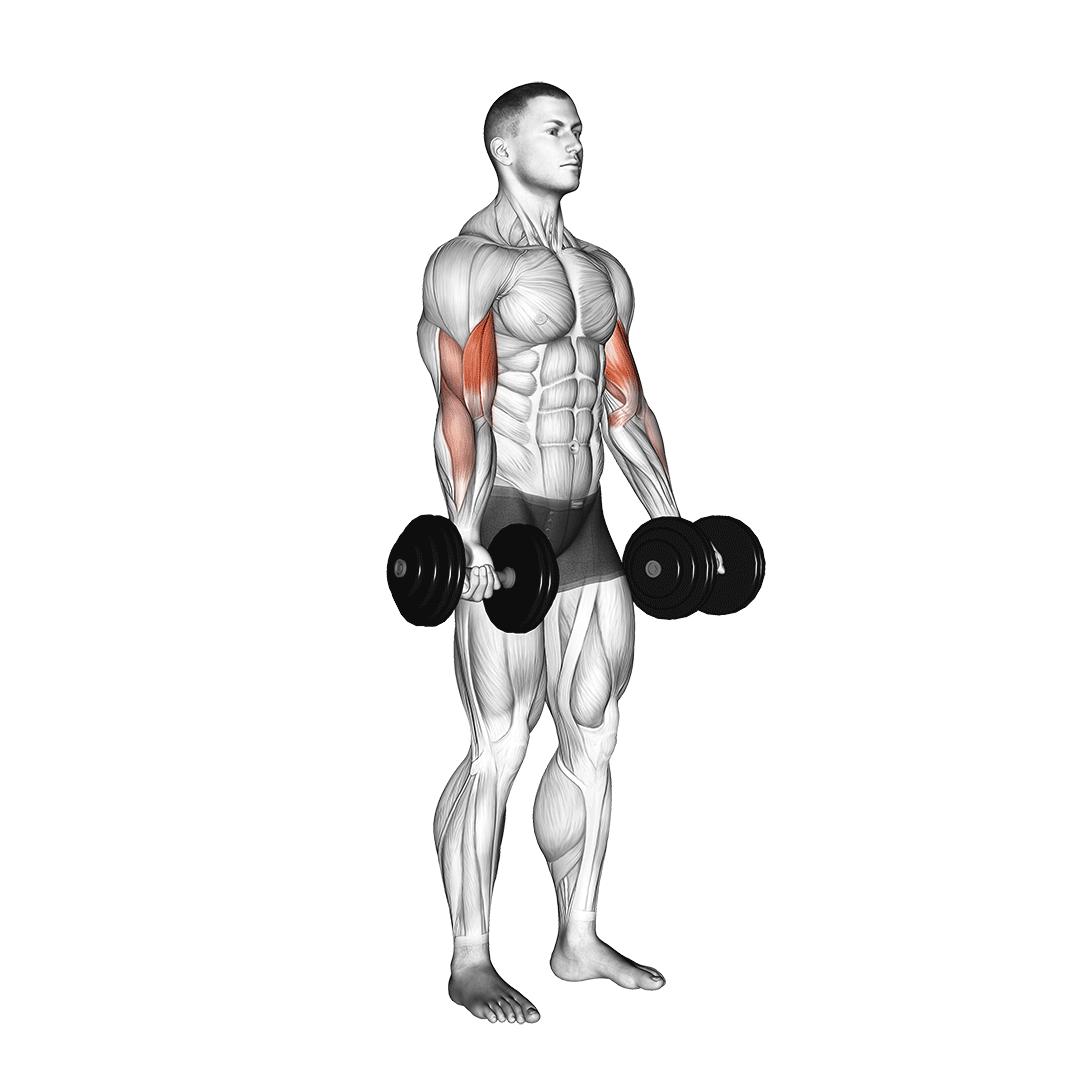
In a pronated grip, the forearms will be rotated away from the midline, such as with conventional deadlifts or pull-ups.
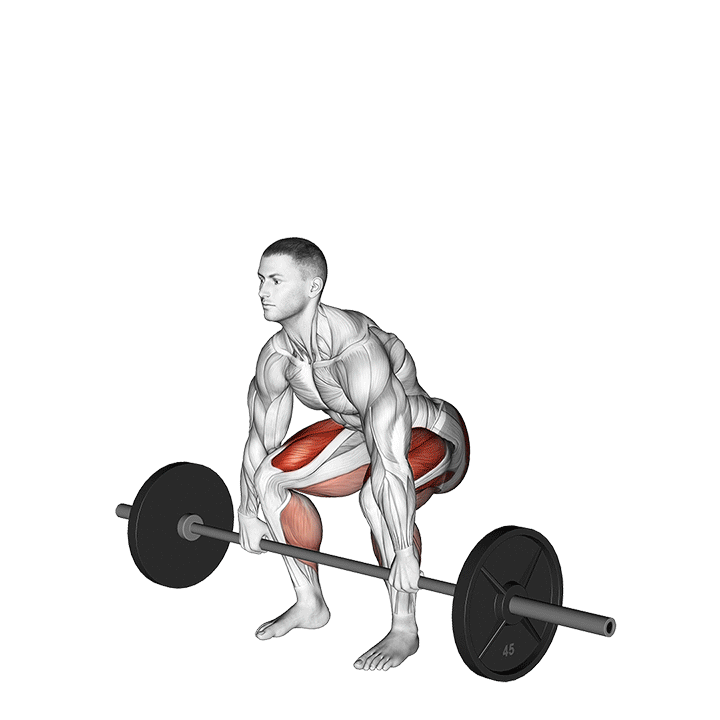
The Importance of Grip in Resistance Training
While the shape of your hand may seem entirely unimportant for exercises that target the chest or back (for example), it is important to understand the concept of the kinetic chain. One part of the body - however distant - will directly affect force production or translation in another.
This concept will also apply to the hands, where if a supinated grip is used, the biceps and forearms will be provided with greater influence over the movement but can also alter several key mechanics.
Conversely, a pronated grip creates greater latissimus dorsi recruitment, and will also influence the ability to execute several biomechanics.
This can be seen in the classic chin-ups versus pull-ups debate, where the supinated grip of the chin-up provides greater focus on the biceps but reduces back muscle involvement, and inhibits internal shoulder rotation; A seemingly small change in forearm rotation drastically alters the movement as a whole.
Of course, there is also the fact that some exercises simply cannot be performed with a specific grip. The barbell bench press, for example, cannot be safely performed with a supinated grip - and the bicep curl will be largely ineffective with a pronated grip (if the goal is to solely target the biceps).
Common Pronated Grip Exercises
The most common resistance exercises that make use of the pronated grip are the deadlift, the bench press, and the pull-up.
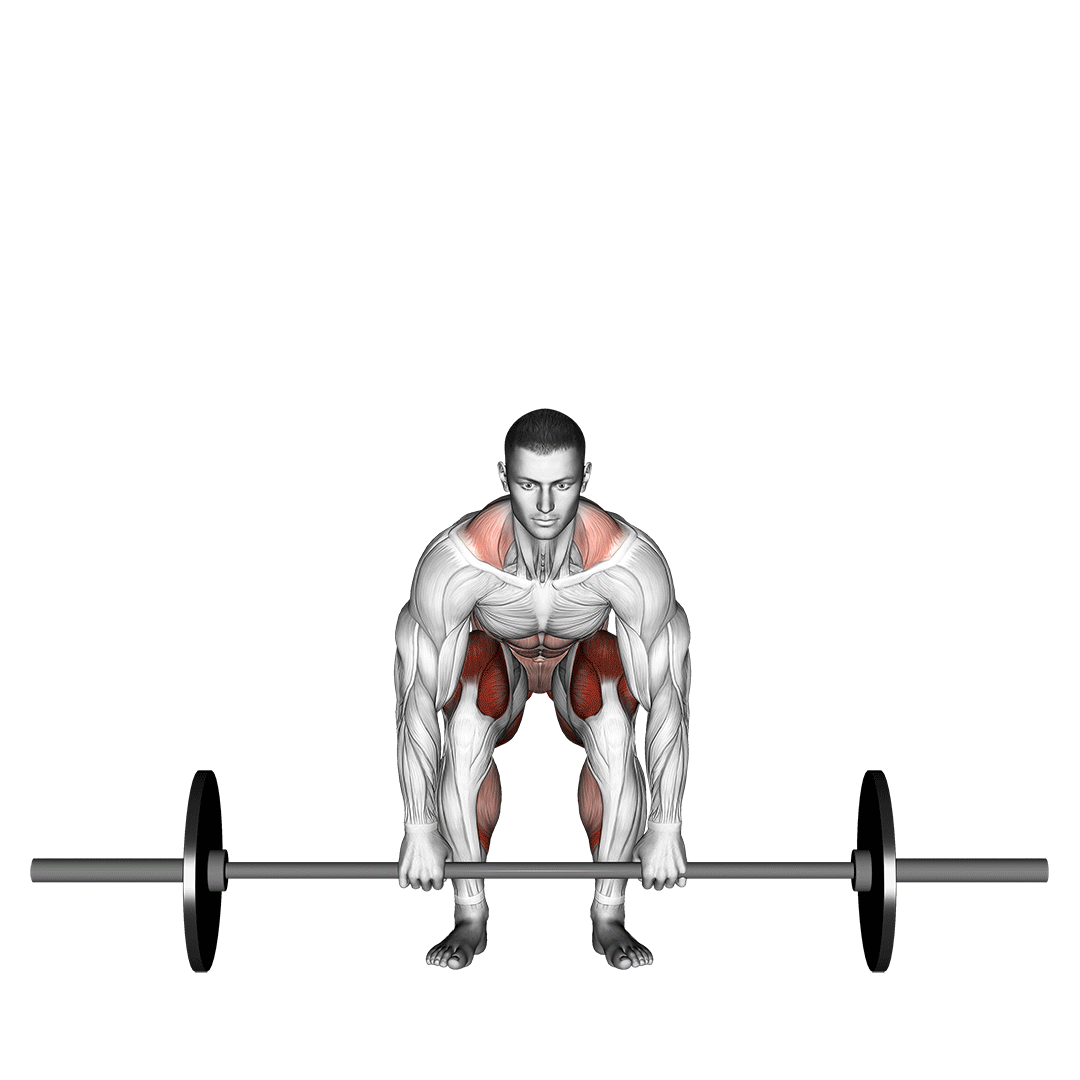
One may note that the majority of free weight “heavy” exercises are performed with a pronated grip - a simple result of the greater safety derived from it.
Common Supinated Grip Exercises
The majority of supinated grip exercises are more specific in scope, and as such movements like the chin-up, Pendlay row and bicep curl are the most common examples.

While most modern weightlifting staples do not utilize a supinated grip, it is nonetheless vitally important in any complete training program due to its capacity for unique angles of resistance and targeted muscular recruitment.
Muscular Emphasis When Using a Supinated and Pronated Grip
In terms of allowing for greater muscular recruitment, supinated and pronated grips differ by the position in which they place the elbows.
A supinated grip allows for greater elbow flexion and internal rotation of the forearms, and as such is known for being better at targeting the biceps and forearms.
On the other hand, a pronated grip allows for safer elbow extension, thereby being better at targeting the muscles of the mid-back.
One may note that plenty of exercises feature “reverse grip” counterparts - a fact that simply refers to the exercise featuring the opposite grip to its conventional form.
Reverse grip bicep curls are performed with a pronated grip, for example. This alters the muscular emphasis of the exercise, allowing lifters to achieve their goals more easily.
Injury Risk and Force Distribution of Supinated and Pronated Grip
Though most exercises are safe if done with proper form, the risk of injury between those using supinated and pronated grips are not quite the same.
Such a distinction is primarily due to the difference in positioning caused by supinated and pronated grip styles, but ensuing muscular recruitment is also a factor that can come into play.
Supinated Grip - Greater Risk of Wrist, Forearm and Bicep Injury
Exercises that use a supinated grip tend to place far more tension on the biceps and forearm muscles, potentially resulting in injury if poor form or excessive weight is being used.
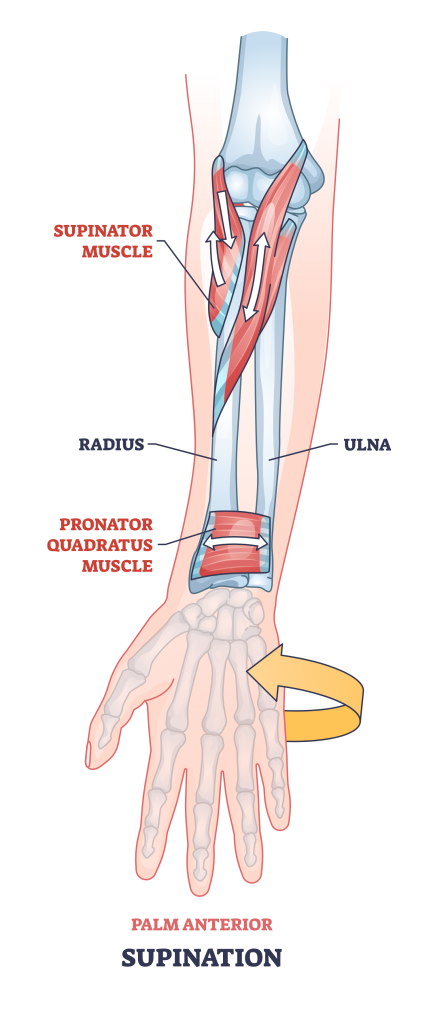
This is further compounded by the fact that many supinated grip exercises will require strict wrist neutrality to perform safely, as bending the wrist in a supinated grip can create shear force throughout the many small tendons therein.
Pain along the forearms and wrists are a common complaint of chin-ups and bicep curls, but are otherwise unheard of in neutral grip and pronated grip alternatives. In order to avoid supinated grip injuries, it is important to pay attention to wrist curvature and the intensity of biceps strain.
Pronated Grip - Greater Risk of Elbow Injury and Shoulder Impingement
The pronated grip is involved in exercises from the overhead press to the deadlift - and as such, it can be hard to pin down a specific injury to the usage of the pronated grip itself.
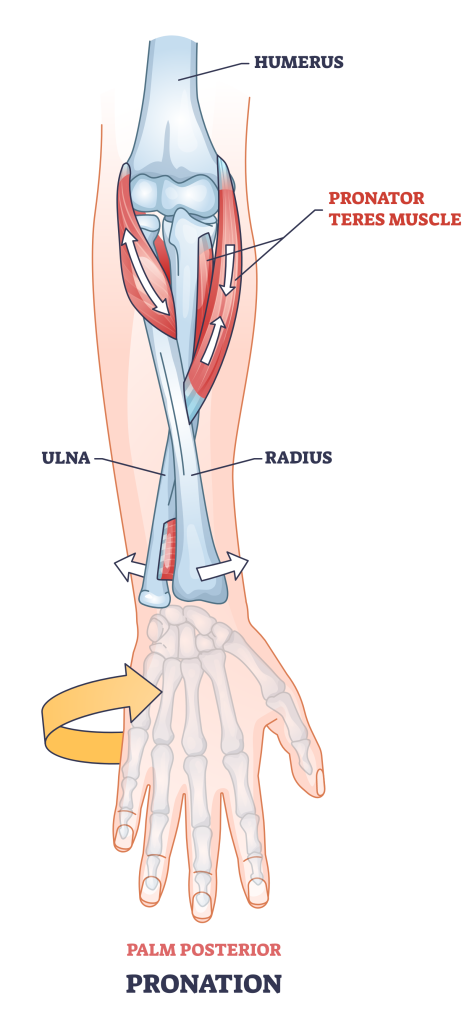
However, across nearly all pronated grip exercises, injuries to the shoulder joint and elbows are likely the most common. The pronated grip will often involve the elbows being in a state of extension - extension that may result in impingement or tendinopathy when exercises are performed incorrectly.
In addition, even in cases where elbow extension is not a factor, a pronated grip increases the risk of rotator cuff injury and irritation due to the distance of the humerus to the shoulder joint, potentially resulting in impingement or irritation.
Supinated grip exercises will often involve a shorter range of motion and an upper arm that is closer to the torso, hence the fact that shoulder injuries are less common in comparison.
Specific Uses for Supinated and Pronated Grips
In actual practice, a complete training program should involve exercises of both a supinated and pronated grip - each of which have specific purposes within the context of resistance training.
For Safely Performing Heavy Lifts and Pressing Exercises - Pronated Grip
A supinated grip - while arguably "better" for grip strength - is also more likely to result in injuries to parts of the arm, even if only due to the delicateness of the tissues therein.
Conversely, the pronated grip eliminates many of the disadvantageous positionings that are brought about by a supinated grip. This not only ensures that press exercises are performed more safely, but also that many traditionally heavy exercises can be performed without risk of bicep tears as well.
In short - the bench press, deadlift and traditional barbell row should all be done with a pronated grip, unless a reverse grip is specifically needed.
For Working The Biceps and Forearms - Supinated Grip
Using a pronated grip can alienate many of the muscles along the arm - such as the biceps and forearm muscles. This is the reason why exercises like the bicep curl or wrist curl involve a supinated grip, as it can better target such muscles without directly involving the triceps as well.
For Working the Latissimus Dorsi - Pronated Grip
Be it due to force distribution or simple biomechanical difference, performing most back exercises with a pronated grip is more effective at training the latissimus dorsi than with a supinated grip.
Exercises like the chin-up, underhand grip lat pulldown and Pendlay row will feature less latissimus dorsi recruitment, as the biceps and forearms are conversely worked to a greater extent.
For a Stronger Grip - Supinated Grip
The supinated grip places the muscles of the forearms in a more advantageous position (or rotation, to be more precise), and as such is more useful when a strong grip is desired.
This is not always applicable, however, and as such is only used sparingly - such as in the case of mixed-grip deadlifts.
Frequently Asked Questions (FAQ)
Is Supinated or Pronated Grip Stronger?
In terms of pure forearm strength, a supinated grip is better.
A supinated grip allows for more of the forearm’s muscles to be recruited as they are in an advantageous position, creating stronger and more enduring grip strength.
What is a Supinated Grip Used for?
Supinated grip exercises are primarily used for working the muscles of the biceps and forearms - such as in the case of bicep curls and chin-ups. A supinated grip is also occasionally used when the use of a pronated grip is impossible or too weak to safely execute the exercise, such as with mixed-grip deadlifts.
Why do Reverse Grip Exercises Feel Better?
Chances are, if you prefer reverse grip exercises over their supinated counterpart, it is because your forearm and biceps muscles are underdeveloped and may require further isolation work.
In addition, a pronated grip reduces the amount of strain placed on the forearms and wrists - hence the greater discomfort when underhand exercises are performed.
So - Which Grip is "Better", Supinated or Pronated?
Neither - both supinated and pronated grip exercises have their own role in a program, and a balance should be struck between the two for a well-rounded and muscular physique.
The majority of primary compound exercises will make use of a pronated grip, whereas many important isolation exercises will feature a supinated one. This is alongside exercises that feature other types, such as neutral grip exercises or those that do not involve the act of gripping whatsoever.
Ensure that your workout involves a reasonable amount of both, and to consult a medical professional if you find that using a specific type of grip results in pain, discomfort or weakness.
References
1. Lusk SJ, Hale BD, Russell DM. Grip width and forearm orientation effects on muscle activity during the lat pull-down. J Strength Cond Res. 2010 Jul;24(7):1895-900. doi: 10.1519/JSC.0b013e3181ddb0ab. PMID: 20543740.
2. Padmore CE, Chan AHW, Langohr GDG, Johnson JA, Suh N. The Effect of Forearm Position on Wrist Joint Biomechanics. J Hand Surg Am. 2021 May;46(5):425.e1-425.e10. doi: 10.1016/j.jhsa.2020.10.017. Epub 2020 Dec 7. PMID: 33303325.
